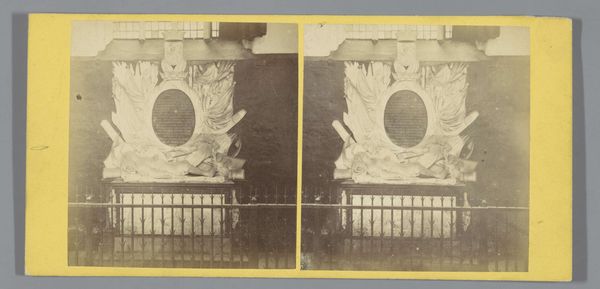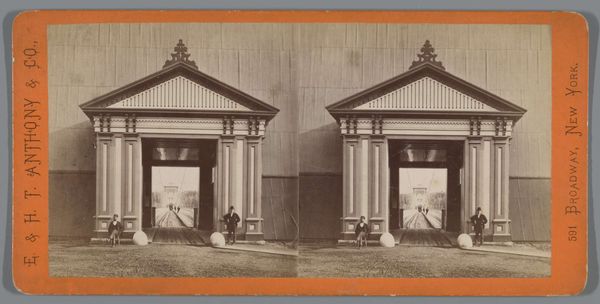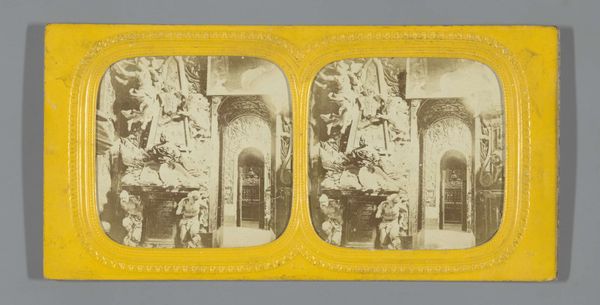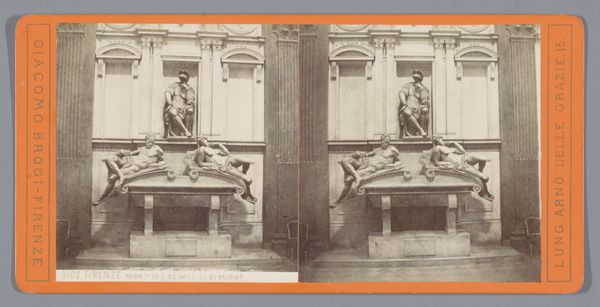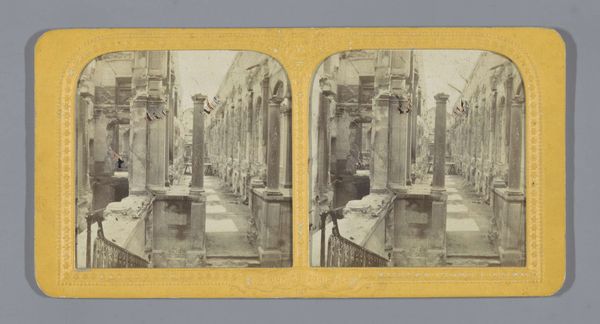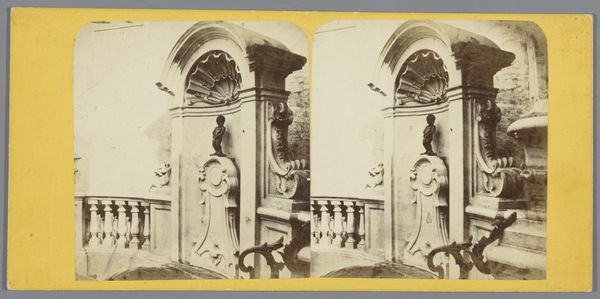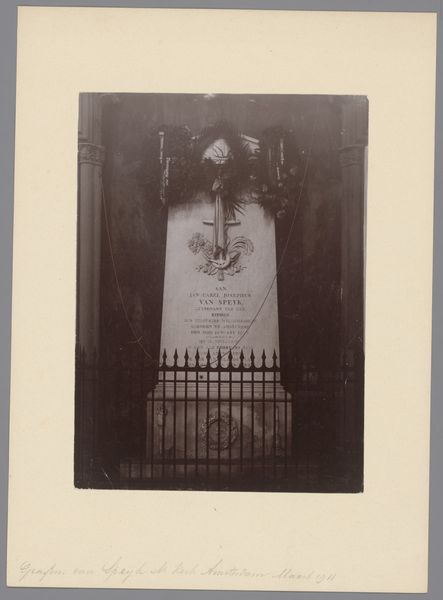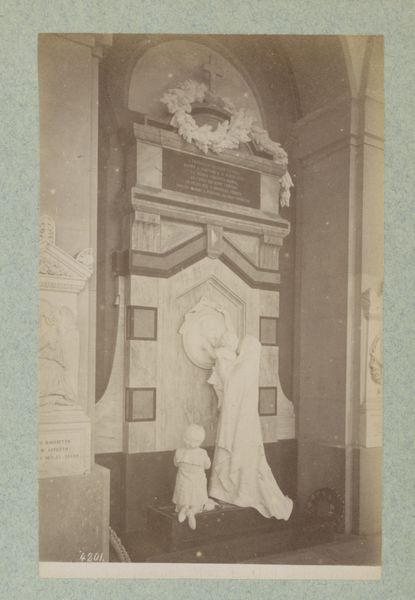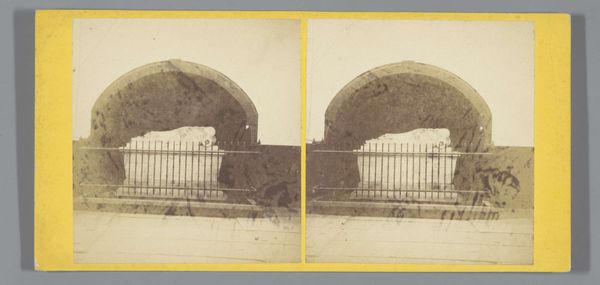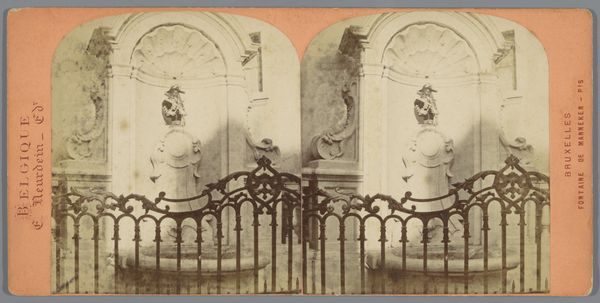
Gezicht op het grafmonument van Jan Carel Josephus van Speyk in de Nieuwe Kerk in Amsterdam 1860 - 1885
0:00
0:00
Dimensions: height 83 mm, width 170 mm
Copyright: Rijks Museum: Open Domain
This stereograph, created by Pieter Oosterhuis, captures the funerary monument of Jan van Speyk in the Nieuwe Kerk, Amsterdam. It’s made through photography, a process itself reliant on chemistry, optics, and industrial manufacturing. The photograph’s material qualities – its tonal range and sharp focus – allow us to examine the monument closely. You can see it is constructed from stone, likely marble, a material prized for its smoothness and ability to be carved. The monument displays classical architectural elements, such as columns, a pediment, and inscriptions. The iron fence, a product of industrial manufacture, encloses the tomb reflecting the shift in materials used for art and architecture during the industrial era. Oosterhuis’s choice of photography invites us to consider the work involved. Not only the labour of quarrying and carving the stone, but also the skilled work and technology involved in capturing the monument’s image. The photograph is a document, yes, but also a crafted object. Understanding this image means considering not just the aesthetic, but also the materiality and making, revealing its connections to industry, craft, and the evolving landscape of art production.
Comments
No comments
Be the first to comment and join the conversation on the ultimate creative platform.
